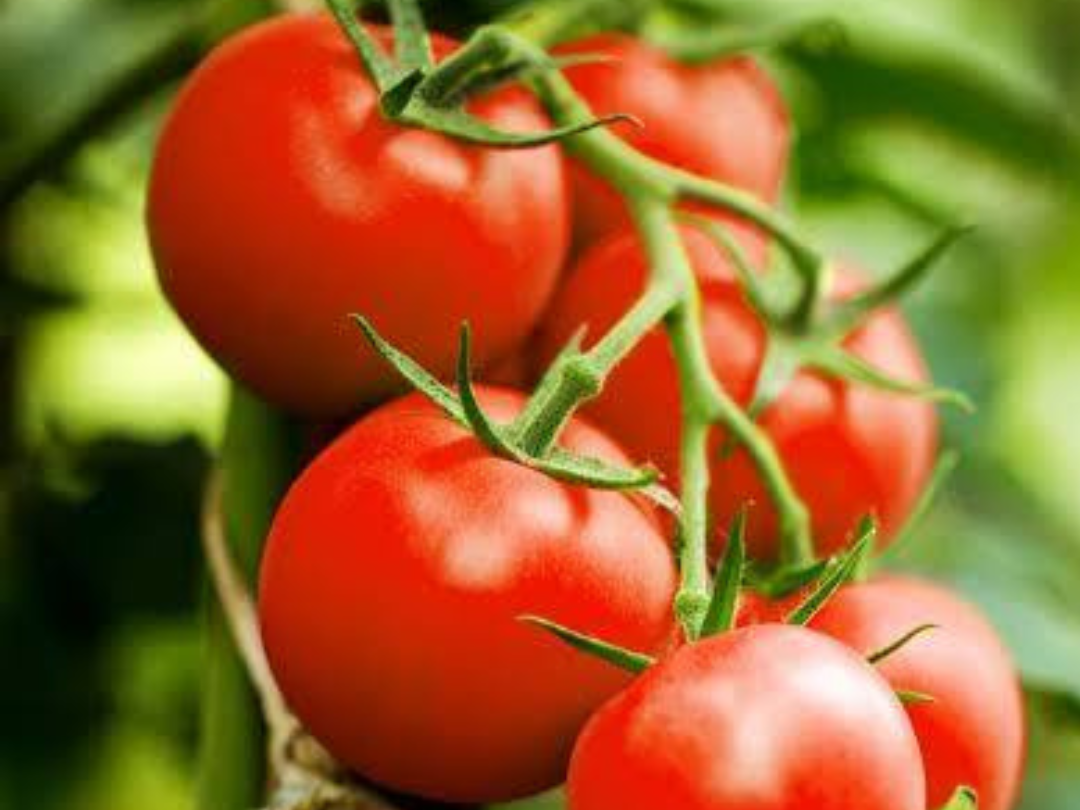Growing exceptional tomatoes – SM Plant to Harvest

Top hints for growing tomatoes
- Plant tomatoes deeply – at least half way up their stems. (You can leave the lower leaves on or twist them off.) Deep planting anchors the plant; the buried stem will put out roots, taking up more water and nutrients and producing more fruit
- Always keep tomato roots moist otherwise the plant will begin to die
- Stake your plants or use a tomato cone to prevent wind damage and breakage
- Choose heritage tomatoes and save seeds from the fruit for planting the following season
- Do not compost spent tomato plants
Positioning tomato plants
Full sun. Choose the third hottest part of the garden for tomatoes, reserving the hottest for eggplants and capsicums.
Soil preparation
Dig over soil with a fork, loosening it and breaking up clods to a spade’s depth. For a 2 x 1 metre bed dig in a barrow load of compost, a bag of cow manure and 2 handfuls of blood and bone. 4 – 5 handfuls of gypsum will also add calcium and break down clay. Add some potash around each plant. Add potash again at the time of flowering.
Planting and spacing tomatoes
Sow seeds in punnets and plant out as seedlings. Start raising seeds in June and plant out in September. Protect seedlings if frost is expected. To get a head start, plant seedlings into large pots with lots of compost, and plant well established plants out when you are certain frosts have passed. Plant out seedlings 1 metre apart in rows 1 metre apart. As the plant grows, remove lower leaves. Once the lower 30cm of the stem is free of leaves, the likelihood of spores jumping through water splatter from the ground onto the leaves and moving upward, infecting the plant with septoria, is much reduced.
Planting tomatoes in pots
Tomatoes grow well in pots. Use a good quality potting mix and add plenty of compost and well rotted animal manure or pelletised manure. Plant one tomato per pot in a pot at least 40cm in diameter. Stake the plant and keep soil moist at all times.
Laterals
Laterals are shoots that grow between the stem and a main branch. Most people remove them but a Diggers’ experiment found that it made no difference to the quality or quantity of fruit. If you do pinch them out, insert them into some potting mix, water well and within 7 -10 days they will have roots and you will have extra plants.
Watering tomatoes
Water directly onto soil or mulch, and if mulch, make sure the soil below it is moist. Water with a soft stream from the hose or watering can or with dripline. Remember to water the roots and not the leaves, and to NOT splash soil onto lower leaves. Water seedlings at the time of planting and every second day for the first couple of weeks; thereafter water deeply twice a week. Tomatoes must never dry out and need a lot of water in summer and as fruit develops. Tomatoes grow wonderfully in wicking beds because of the consistent water at their roots.
How to avoid blossom end rot
Blossom end rot is a condition that as the name implies, causes rotting on the underside of tomatoes. Technically, it is a result of the plant getting an inadequate supply of calcium but this is usually caused by the plant not getting sufficient water to its flowers and fruit. Strengthen the water delivery system by applying additional potash (available in packets from your nursery) around each plant at the time of flowering, and make sure you are giving the plant adequate water in the root zone.
How to avoid sunburn
When there is an extreme heat event, tomatoes can burn and blister. Blisters manifest as white, soft skin blemishes. Rig up a quick shade house by banging four star pickets into the corners of the bed, drape with shade cloth or old sheets and secure with yellow star picket caps. Alternatively just drape an old sheet over the plants. Water deeply BEFORE the heat event. A well hydrated plant will not burn or wilt.
Crop rotation
Do not grow in the same place, or where other members of the Solanaceae family such as eggplants, capsicums and potatoes have been grown, for three years.
Queensland Fruit Fly (QFF) protection
QFF attack medium and large tomatoes, and if nothing else is around, cherry tomatoes as well. QFF is rife in the northern suburbs of Melbourne and spreading rapidly throughout the whole of Melbourne.
Net tomato seedlings at planting with 2mm x 2mm insect exclusion netting. Tomatoes are self-fertile. They vibrate in the wind and fertilisation will take place inside the net. Secure the net at the base with mulch, soil or something heavy to prevent the tiny QFF crawling beneath it
Other pests and diseases
Green caterpillars sometimes infest the fruit. Spray with Dipel (an organic bacterium available at nurseries) when the fruit is small and green to prevent infestation.
There is quite a range of diseases that can affect tomato plants. Septoria which is a canker that appears as dark spots with a lighter centre on the leaves is the most common. It is a worldwide phenomenon, spread by wind and rain. Although it does not affect stems and fruit, it reduces the vigour of the plant. The older leaves get it first and then it works its way up the vine with leaves drying out and dropping. Keeping the leaves dry, removing any leaf debris from beneath the vines regularly, and rotating your tomato bed each year are the best solutions. Do not compost tomato plants as diseases can spread through the heap and affect your garden. With other diseases, google photos on the internet to identify what you have.
Written by Robin Gale-Baker
